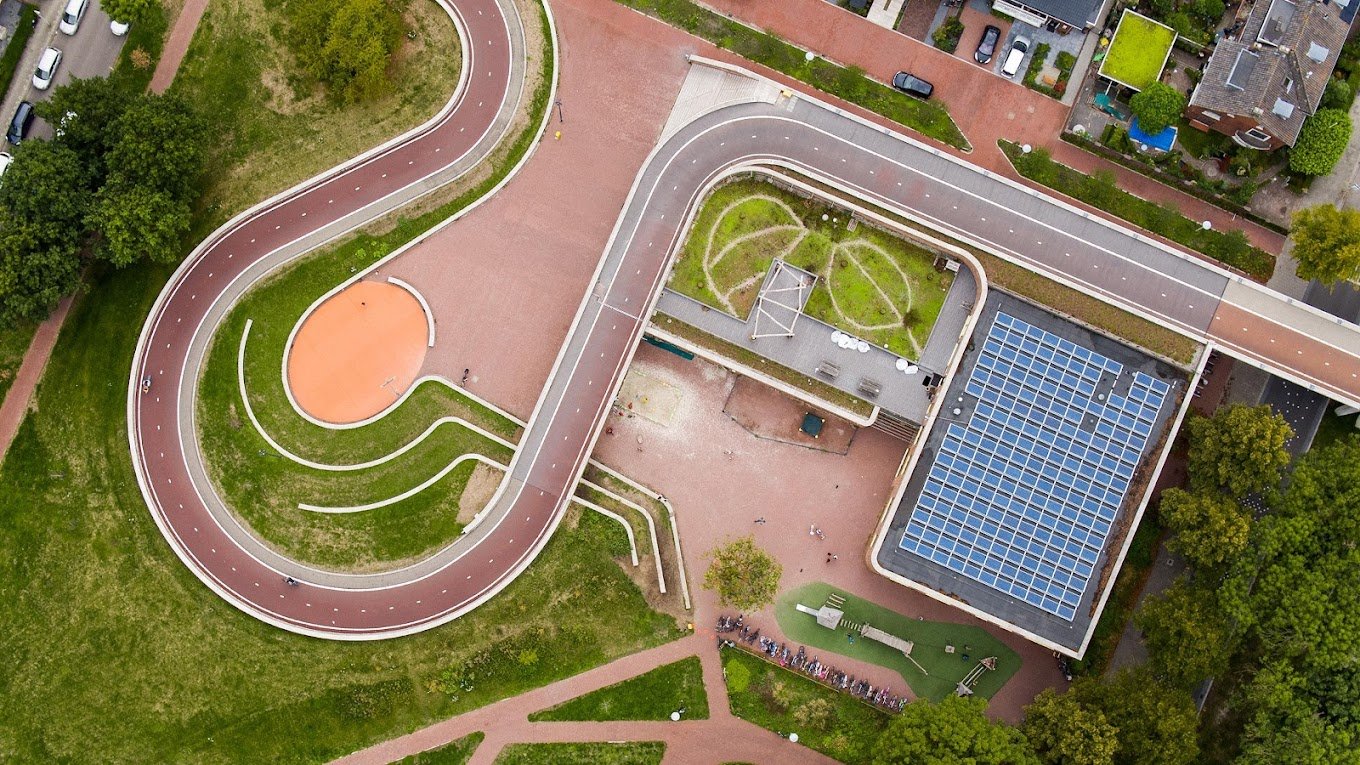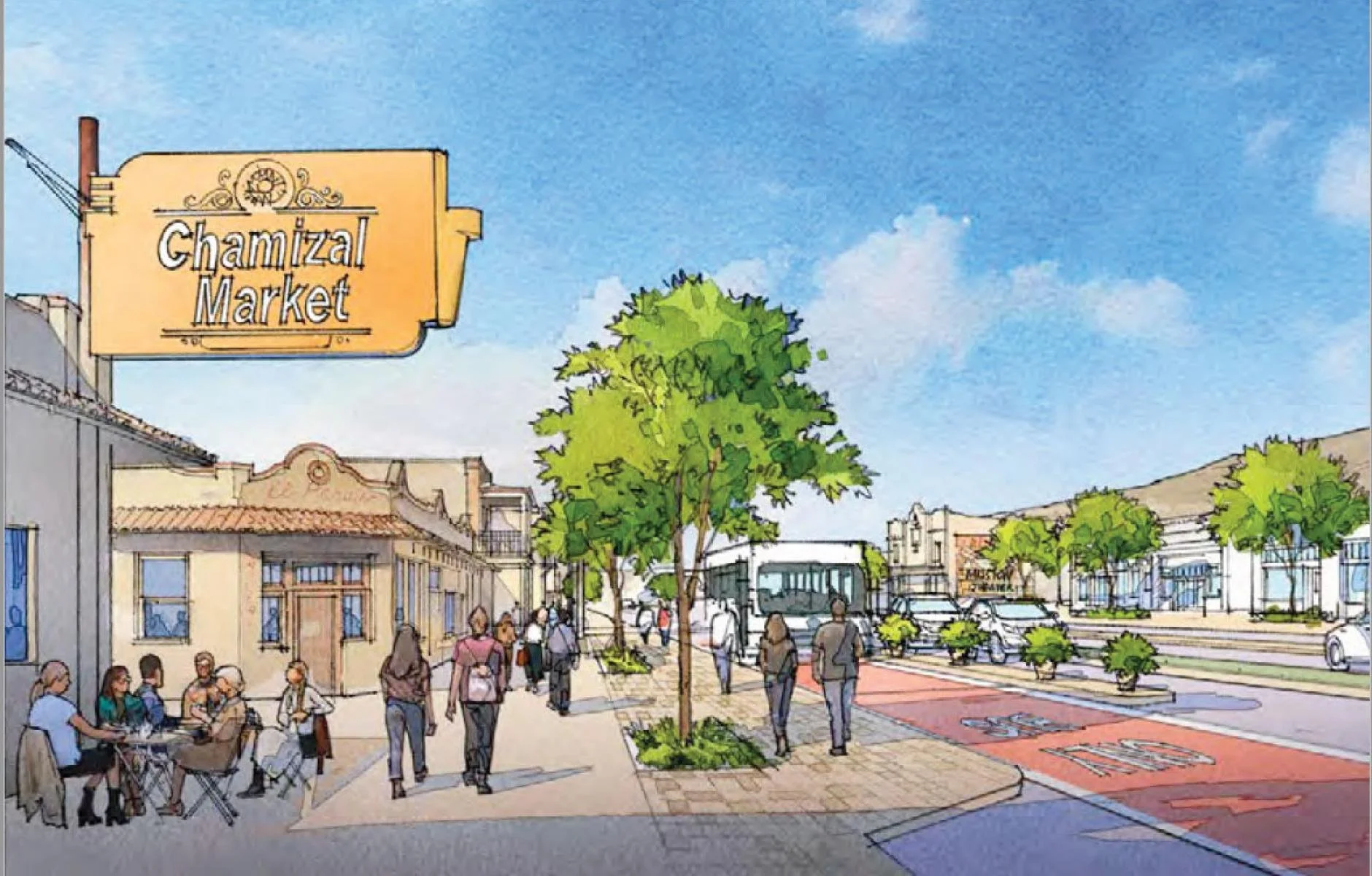Inside the On Ramp: This School May Have America’s Worst Location
There’s a school in the Netherlands that’s much admired for having a bike path pass directly over its roof:
An aerial view of the bike path passing over a school in Utrecht, Netherlands. (Source: Google Maps/Danielle van den Brink.)
Now, compare that to this American equivalent, which will also likely trigger a strong (albeit not-so-positive) response:
Think of what you’d want in a school for your child. Safe, pedestrian-oriented streets? Not here. A calm, quiet atmosphere for learning? No and no. A healthy green space for outdoor activity? Just the opposite, with constant highway traffic spewing fumes at playing children.
Don’t blame the operators. Dayton Smart Elementary is a K-6 charter school in Dayton, Ohio. It has an admirable mission, serving a low-income area with greater access to education. It also occupies a location that could be the poster child for North America’s voracious appetite for road building, with one side of the building facing a surface street, and the rest entirely encircled by a highway ramp for Ohio State Route 35.
Beyond the visceral, something’s-wrong-with-this-picture reaction you might have to seeing this space, the lived reality of it is even grimmer, with the neighborhood’s most vulnerable residents forced to navigate a dangerous, unhealthy landscape on a daily basis.
Start with arriving at school each day. For students unlucky enough to live on the north side of the highway, they face a convoluted way across the highway ramp, under an overpass, and then under the highway in a dimly lit space. As Edward Erfurt, an urban planner with over 20 years of experience, puts it, “These are areas that people don't want to be. We don't feel safe as humans, there's no eyes on the street.”
Pedestrian access from the other side of the highway is just as problematic, walking along and eventually crossing a four-lane road. Then as you arrive at the school, all the driveways are in conflict with the highway on ramp, making the final approach to school treacherous for cars, buses, and pedestrians.
Even for drivers, this site surrounded by car infrastructure is surprisingly difficult to navigate. With only one side accessible to surface traffic, cars and buses can only enter off South Keowee Street, intersecting traffic coming to the highway entry ramp at the end of the block. Plus, Erfurt notes that cars exiting the highway eastbound can’t turn directly into the school, necessitating a multi-block detour through neighborhood surface streets. Compounding all that extra mileage adds substantial fuel costs and wear and tear on infrastructure.
While fumes are the most recognizable harm for any building sited near a highway, “the worst pollution that comes from automobiles is not necessarily from the tailpipe,” notes Erfurt. He points out that brake dust containing asbestos and tires shedding toxic materials are also health threats, and that all those dangerous materials you might see along the curb of a busy road would accumulate in this location. There’s also clear documentation that living near highways increases childhood asthma rates.
Erfurt sees this situation as an indictment of planners prioritizing through-traffic over all other users of a site. “If this was to be looked at differently, if it was about the neighborhood, the transportation solution would be different,” and even now it would be possible to “untangle” the highway ramps and mitigate much of the danger.
Erfurt’s greatest lament is that the people most harmed by these places marred by our development pattern (you could probably identify one in your town) had no say in it. “We have determined that at a certain age, you can make some decisions and take some risks to your health. But a six-year-old or a seven-year-old does not have that opportunity. And I think it's unfair to go and put them in a place like this.”
As for the current school site? “The best and highest use for this location is a stormwater pond, a thing that is subservient to the highway but does not bring any people there,” says Erfurt.






Take a trip with our Community Builder, John Pattison, as he discovers why the design of Scottish roads makes them safe—and downright pleasant—to drive on, even for a foreigner!